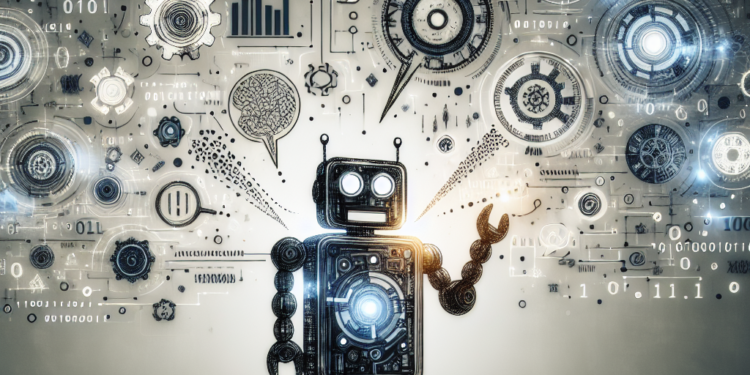AI-Powered Chatbots: A Comprehensive Review
In recent years, Artificial Intelligence (AI) has made significant advancements in various industries, and one of the most prominent applications of AI is in the form of chatbots. AI-powered chatbots are designed to interact with users in a natural and conversational way, providing automated responses to their queries and helping to streamline customer service processes. In this article, we will provide a comprehensive review of AI-powered chatbots, exploring their benefits, limitations, and potential future developments.
What are AI-Powered Chatbots?
AI-powered chatbots are virtual assistants that use natural language processing (NLP) and machine learning algorithms to understand and respond to user queries in a conversational manner. These chatbots can be deployed across various platforms, such as websites, mobile apps, and messaging apps, to provide 24/7 customer support and assistance. AI-powered chatbots are designed to mimic human interactions, enabling them to engage users in meaningful conversations and provide personalized responses based on the user’s input.
The Benefits of AI-Powered Chatbots
AI-powered chatbots offer a range of benefits for businesses and consumers alike. One of the key advantages of using chatbots is their ability to provide instant responses to user queries, reducing the need for users to wait in long queues or navigate complex phone menus. Chatbots can also handle multiple queries simultaneously, ensuring that users receive prompt assistance without any delays.
Furthermore, AI-powered chatbots are capable of learning from past interactions and improving their responses over time. This enables chatbots to provide more accurate and relevant answers to user queries, enhancing the overall user experience. Chatbots can also be integrated with backend systems, enabling them to access information from databases and other sources to provide users with more in-depth assistance.
From a business perspective, AI-powered chatbots can help streamline customer service processes and reduce operational costs. By automating routine tasks and providing instant responses to user queries, chatbots can free up human agents to focus on more complex issues and strategic tasks. Chatbots can also help businesses gather valuable insights into user preferences and behaviors, enabling them to tailor their products and services to meet the needs of their customers.
The Limitations of AI-Powered Chatbots
While AI-powered chatbots offer a range of benefits, they also have certain limitations that need to be considered. One of the main challenges with chatbots is their ability to understand and respond to user queries accurately. Chatbots rely on NLP algorithms to interpret user input, and they may struggle to understand complex or ambiguous queries, leading to inaccurate responses.
Furthermore, chatbots may lack the ability to provide personalized responses based on user context and preferences. While chatbots can be programmed to recognize certain keywords and phrases, they may struggle to understand the nuances of human language and emotions. This can lead to a lack of empathy and understanding in interactions with users, impacting the overall user experience.
Another limitation of AI-powered chatbots is their inability to handle complex or sensitive issues that require human intervention. While chatbots are effective at answering routine queries and providing general information, they may struggle to address more complex issues that require human judgment and empathy. In such cases, users may become frustrated with the limitations of chatbots and seek assistance from human agents.
Future Developments in AI-Powered Chatbots
Despite these limitations, AI-powered chatbots continue to evolve and improve with advancements in AI technology. One of the key areas of development in chatbots is the deployment of advanced NLP algorithms and deep learning techniques to enhance their ability to understand and respond to user queries. By leveraging these technologies, chatbots can improve their accuracy and effectiveness in engaging users in natural conversations.
Another area of development in chatbots is the integration of chatbots with other emerging technologies, such as voice recognition and sentiment analysis. By incorporating these technologies into chatbots, businesses can create more immersive and interactive experiences for users, enabling them to interact with chatbots using their voice and receive personalized responses based on their emotions and sentiments.
Furthermore, advancements in AI technology are enabling chatbots to be deployed across a wider range of industries and use cases. Chatbots are being used in healthcare, banking, retail, and other sectors to provide personalized assistance to users and streamline business processes. With the increasing adoption of chatbots, businesses are exploring new ways to leverage chatbots to enhance customer service and drive business growth.
Conclusion
In conclusion, AI-powered chatbots have emerged as a powerful tool for businesses to streamline customer service processes and provide personalized assistance to users. While chatbots offer a range of benefits, including instant responses, improved user experience, and reduced operational costs, they also have certain limitations that need to be addressed. As chatbots continue to evolve with advancements in AI technology, businesses have the opportunity to leverage chatbots to enhance customer service, drive business growth, and improve overall user experience. With the potential for future developments in chatbots, we can expect to see further advancements in AI technology that will enable chatbots to become even more intelligent, responsive, and personalized in their interactions with users.













